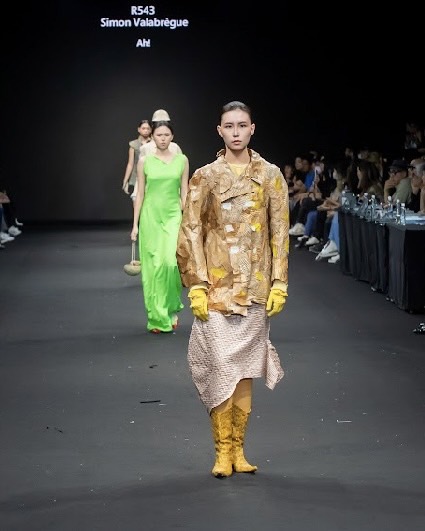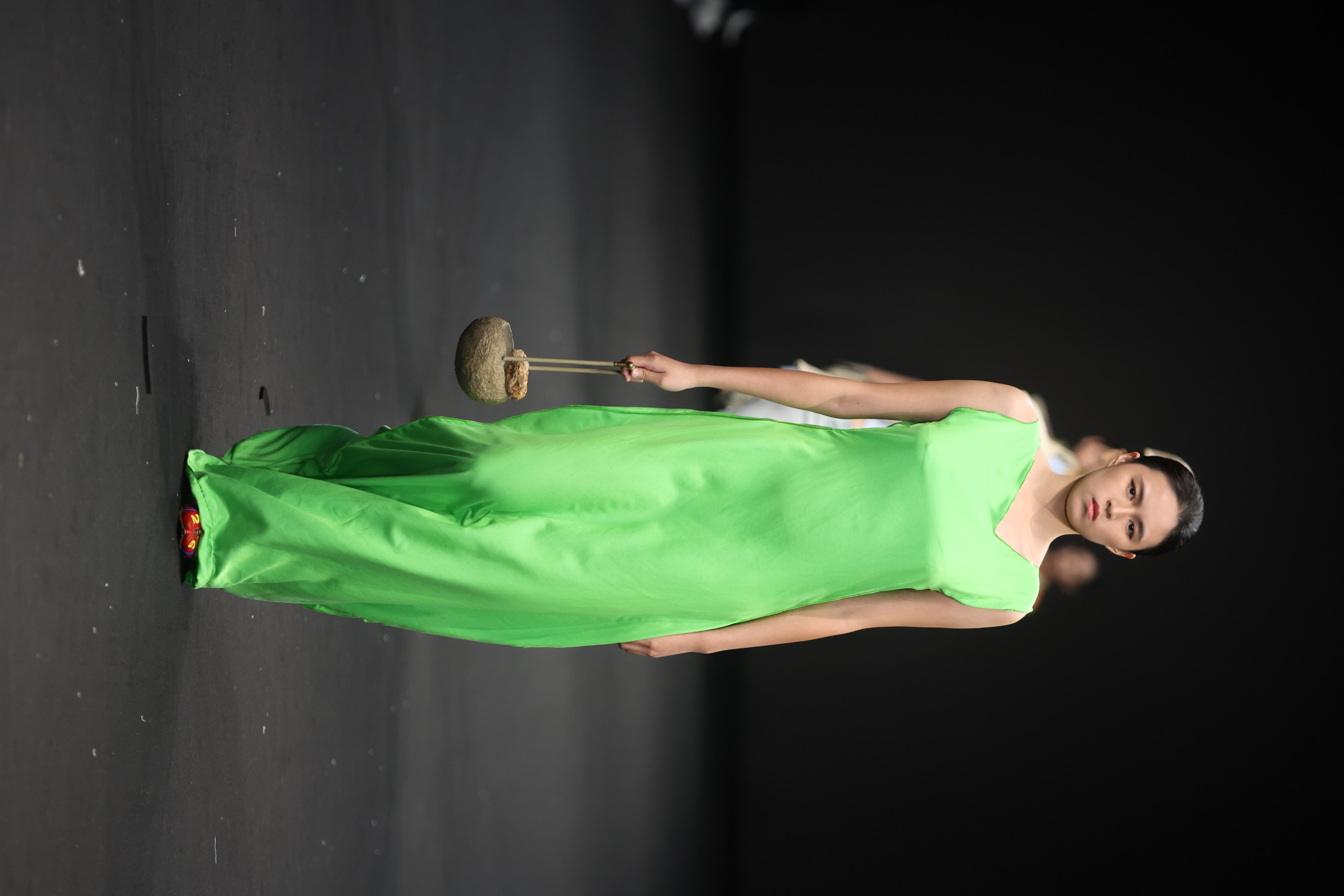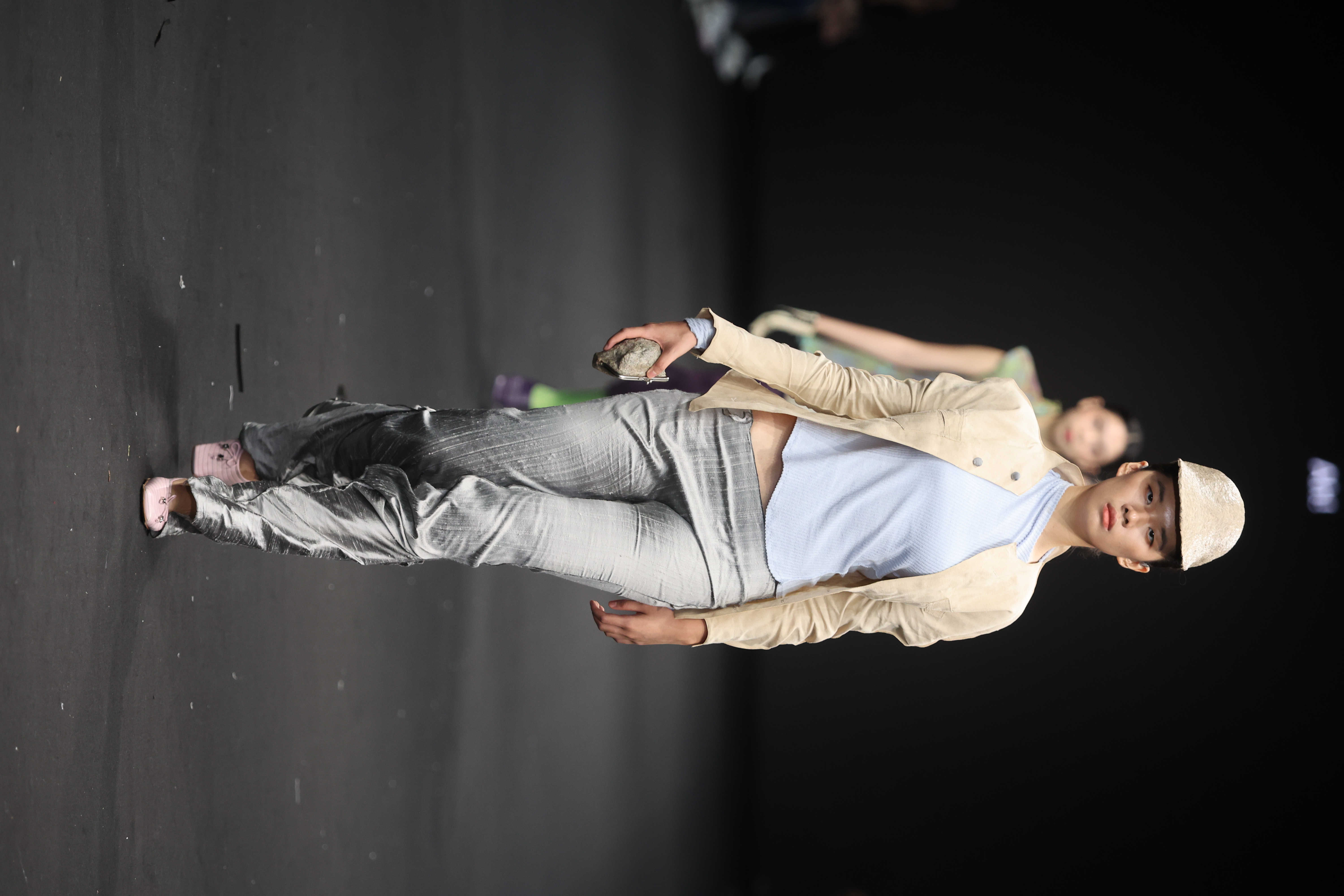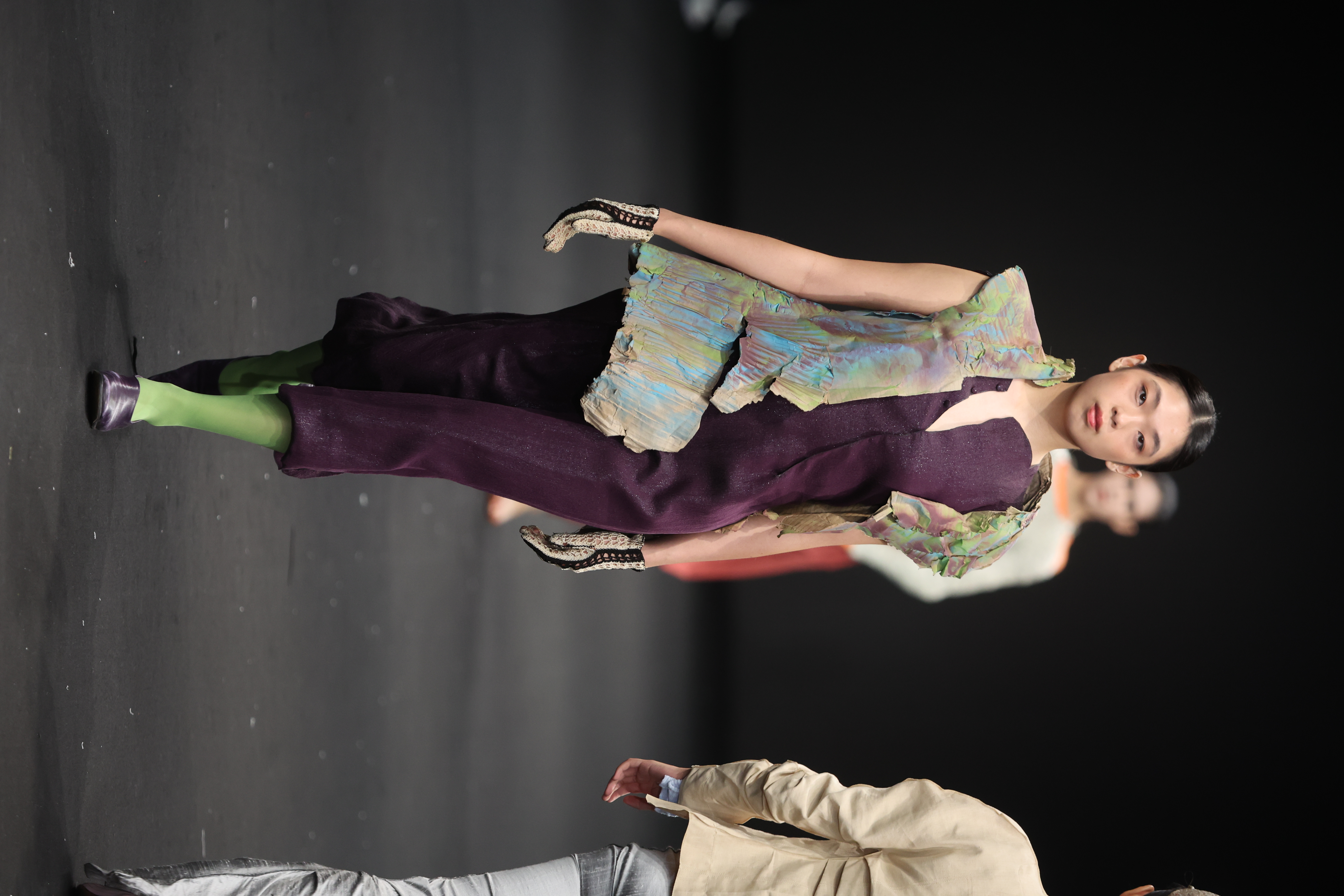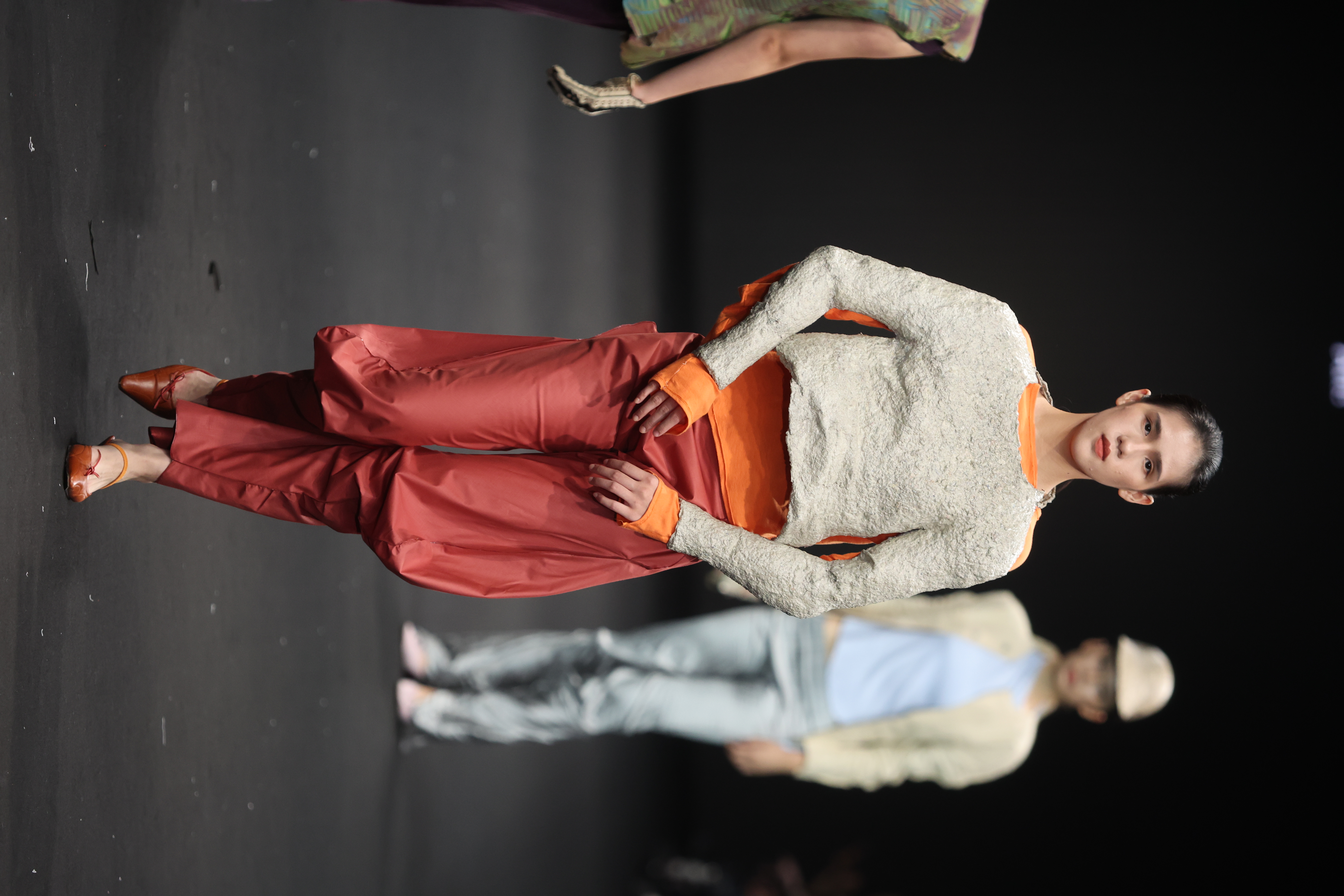作品與「永續」、「功能」、「機能」之關聯性
A design is always a projection, a way to point out a vision at the same time as an attempt to reach it. This collection is an experiment meant to reconcile this etymology of design with the technicity and standardization of garment making. It is an exchange between the geometry of pattern-making and the liberty of free hand drawing, as well as an exchange between draping and sculpting.
In a way, I wanted to give garments an individuality, similar to the one of the people who would wear them. As such, they always are the result of a gesture of my hand: the fabric pieces are patterned through a process of sight-size drawing with a model holding a pose and her clothing being the basis of the future garment. The cardboard and paper mache pieces are built directly on custom mannequins with an almost architectural method, in a couture tradition.
Every item is thus bespoke in a unique manner: constructed through an image captured by my eyes and transformed by my hands.They bear the marks of their origins: posture, material will then influence the wearer and allow for movement, or on the contrary stiffen and lead to a specific attitude. The model affects the garment worn, but similarly, the garment affects the model.
Fabric and trims are deadstock or thrifted, paper and cardboard are found and reused. Their particularities, uniqueness and rawness are showcased instead of hidden, with finishings of varnish on the cardboard and on the seams, embellishing the materials with an unexpected shininess. These choices of colors, of materials are another expression of the diversity considered by the collection.


